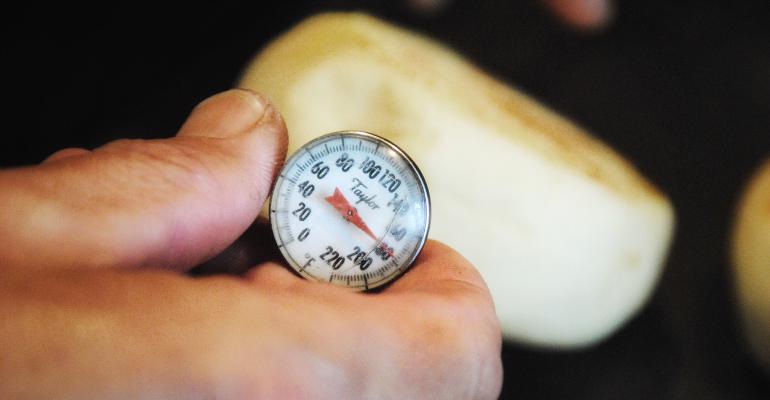Sponsored by HotSchedules
Is your organization’s food safety training scalable? It’s a question that all multi-unit restaurant operators need to ask themselves.
According to the latest data from the United States Centers for Disease Control, there were 841 foodborne illness outbreaks in the U.S. in 2016, with Norovirus being the most frequently confirmed, single cause. Of those outbreaks, 60 percent were traced to restaurants. Furthermore, sit-down dining establishments accounted for nearly half of those restaurant sources.
“Food safety is one of the most important aspects of any restaurant business” says Mary Hamill, Vice President of Sales Solutions for HotSchedules. Hamill would know. Over her 20 year career in the industry, she served as a VP of Human Resources and VP of HR & Information Technology for brands like Fuddruckers and Max & Erma’s.
“Unfortunately, it’s something that can be easily taken for granted. While employees might know how important food safety is to the health and safety of guests, it can be hard to keep that top-of-mind when a 45-minute wait has built up and everyone is rushing around.”
Now take that single store’s lapse in food safety protocol – something that could happen during any busy lunch rush – and multiply it by 20, 50 or even 400 units. Scary, right?
While food safety can seem like a greater and greater challenge the more an organization grows, that size isn’t necessarily a disadvantage. After all, bigger businesses typically have more resources and budget at their disposal.
“If you have the dollars, they can be allocated towards learning and development departments charged with rolling out food safety training and accountability programs alongside their auditing teams,” Hamill says.
Four Steps to Build a Better Food Safety Culture
So, how do multi-unit restaurant brands scale their food safety training? It starts with making food safety part of the company culture, ingraining best practices into daily operations.
“When you build food safety into your culture, it’s harder for your teams to forget it,” Hamill says. “It becomes another part of your employees’ days.”
Mitigating the risk of foodborne illness in a growing franchised business requires a solid training program, transparent communications and verifiable, electronic documentation of your food safety procedures. The key pillars of building a food safety culture include:
Education
Food safety and compliance start with education. Take-home guides and rushed training periods don’t fully benefit your workers in an increasingly complex supply chain. Give your employees easy access to their materials and track their progress in an online environment. Food safety and responsible alcohol service training can be integrated into learning management solutions like HotSchedules’ Clarifi Talent Development module for continuous compliance and team engagement.
Communication
If your employees are unaware of your food safety program, it’s impossible to implement properly.
“Don’t leave the understanding of your food safety program to chance,” Hamill says. “A documented understanding of your program is the first step in food safety becoming a part of your company culture.”
Regular check-ins with your employees show you’re invested in their success and the importance of these tasks. Ensure that team members know what is expected, have the training they need and the online tools for collaboration and shared learning.
One way to achieve this is through a restaurant operating platform with intelligent workflows. This technology connects your business’s tasks, teams, processes and data in a single, collaborative application for successful operations, allowing managers to increase efficiency, reduce risk and avoid quality failure.
Documentation
Provide clear expectations of what you need from your team. This can be easily achieved by:
- Building accountability into line checks and food safety programs.
- Establishing site-specific rules when needed.
- Finding a solution that collects compliance information for easy review.
“You can rest a whole lot easier when you can easily review time-stamped daily activities, like follow-up actions on out-of-tolerance temperature readings,” Hamill says.
Your employees have an easy-to-follow procedure and everyone realizes the importance of the task. Solutions like HotSchedules’ Clarifi intelligent restaurant operating platform not only guide managers through their daily tasks with associated dependencies and completion time requirements, but also incorporate a natural cadence of training.
Connection
When your food safety program is integrated with your technology, it’s truly possible to establish supply chain transparency. Consider solutions that integrate thermometer readings with cooling and warming equipment to track temperature readings. Mobile alerts issue quick notifications of possible problems and limit food safety concerns and potential product loss. This is all possible with open API integrations with your software solutions.
Food safety needs to be a priority for every single employee because it is an issue that lives and dies in the details. Create an environment and culture where food safety is an integral part of everyone’s duties in providing a great restaurant experience. Hospitality is at the heart of the restaurant business, and that all starts with the safety and well-being of your guests.




